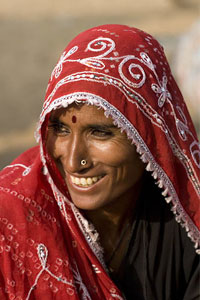|
The folk tribes in Rajasthan are an ancient and a
multi-communal society. There are about 200 different
groups of folk people. Each group has its own
interesting history of origin, characteristics,
established social conventions, customs and social
practices.
Tribes of Rajasthan are:
Bishnois
There is a ban on killing animals and felling green trees, and
thus protection is provided to all life forms. Ever since,
their sanctity has extended to all trees and animals, and they
do not allow either felling or hunting on their lands. They
are pure vegetarian and nature worshipper. They treat black
buck as a sacred animal. They also believe that in their after
life they will be reincarnated as deer, due to this the herds
of deer can be seen roaming in their fields, without fear.
|
 |
|
|
Minas
The Minas are the militant defenders of Rajasthan. The Minas
are the second largest and most widely spread tribal group in
Rajasthan after the Bhils, and are most widely spread. The
name Mina is derived from the word meen or fish, and the Minas
claim descent from the fish, incarnation of Lord Vishnu.
With the withdrawal of the Criminal Tribes Act, the
Minas took to agriculture. The literacy rate among the Minas
was very low, but is improving. The Minas have a tall,
athletic build with sharp features, large eyes, thick lips and
a light brown complexion.
Various other folk tribes of Rajasthan are Rajputs,
Brahmins,
Jats,
Muslim Settlers,
Nomads,
Gujars,
Bhils,
Tribals,
Rebaries,
Gavarias,
Banjaras,
Sahariyas,
Garasias,
Bhands,
Bhambis,
Kolis,
Harijans,
Traders,
Merchant,
Service People,
Kumhars,
Khatis,
Charans,
Nais,
Gadia Lohars. |